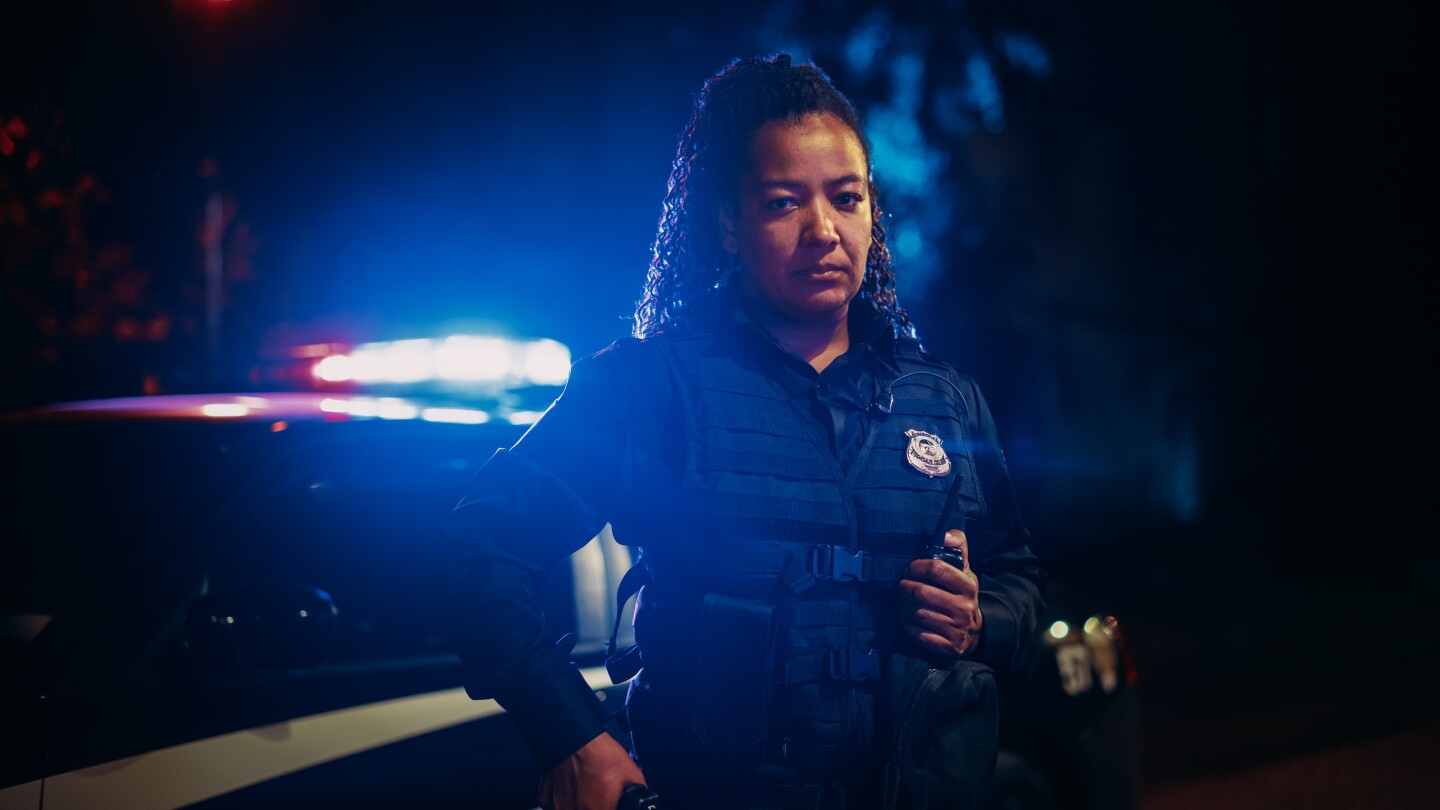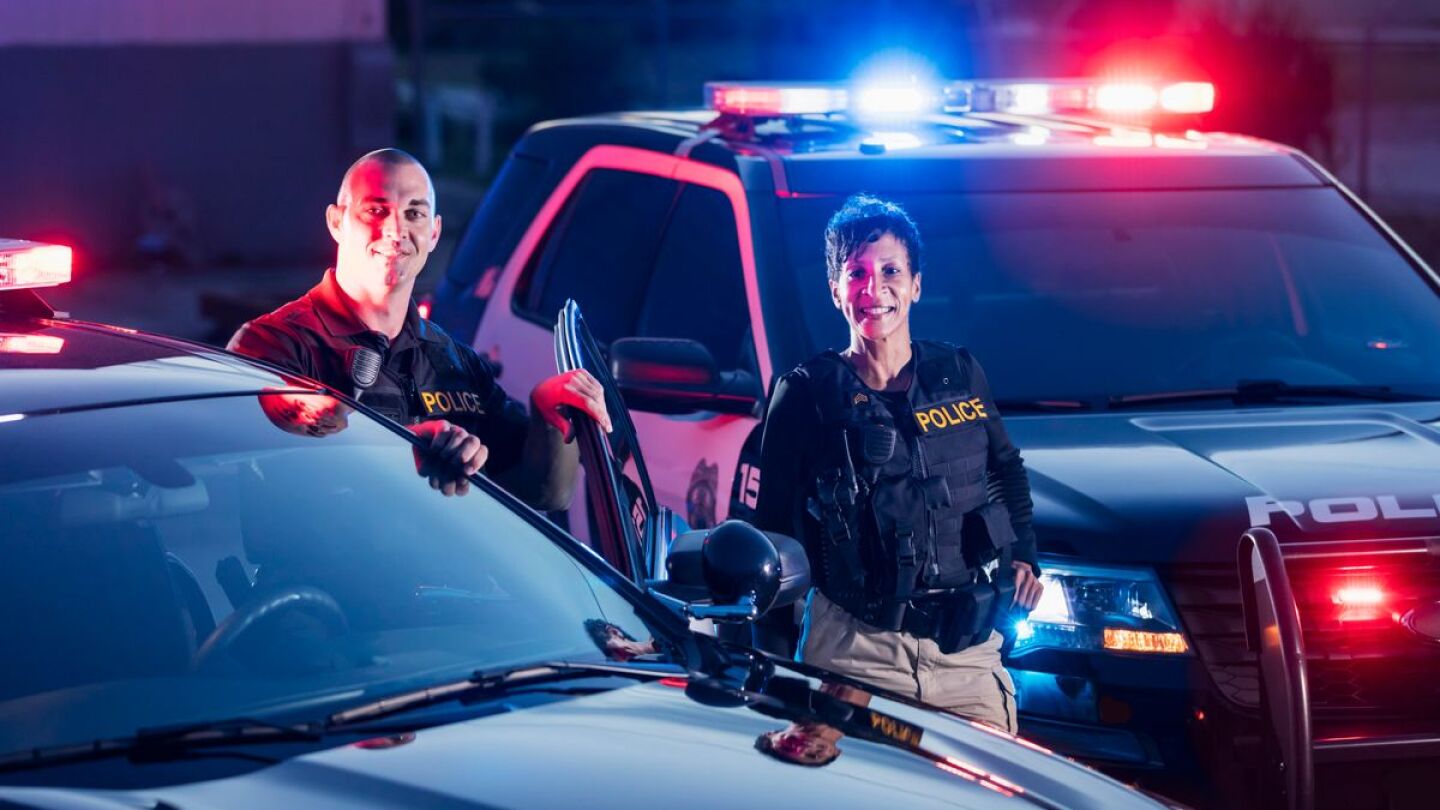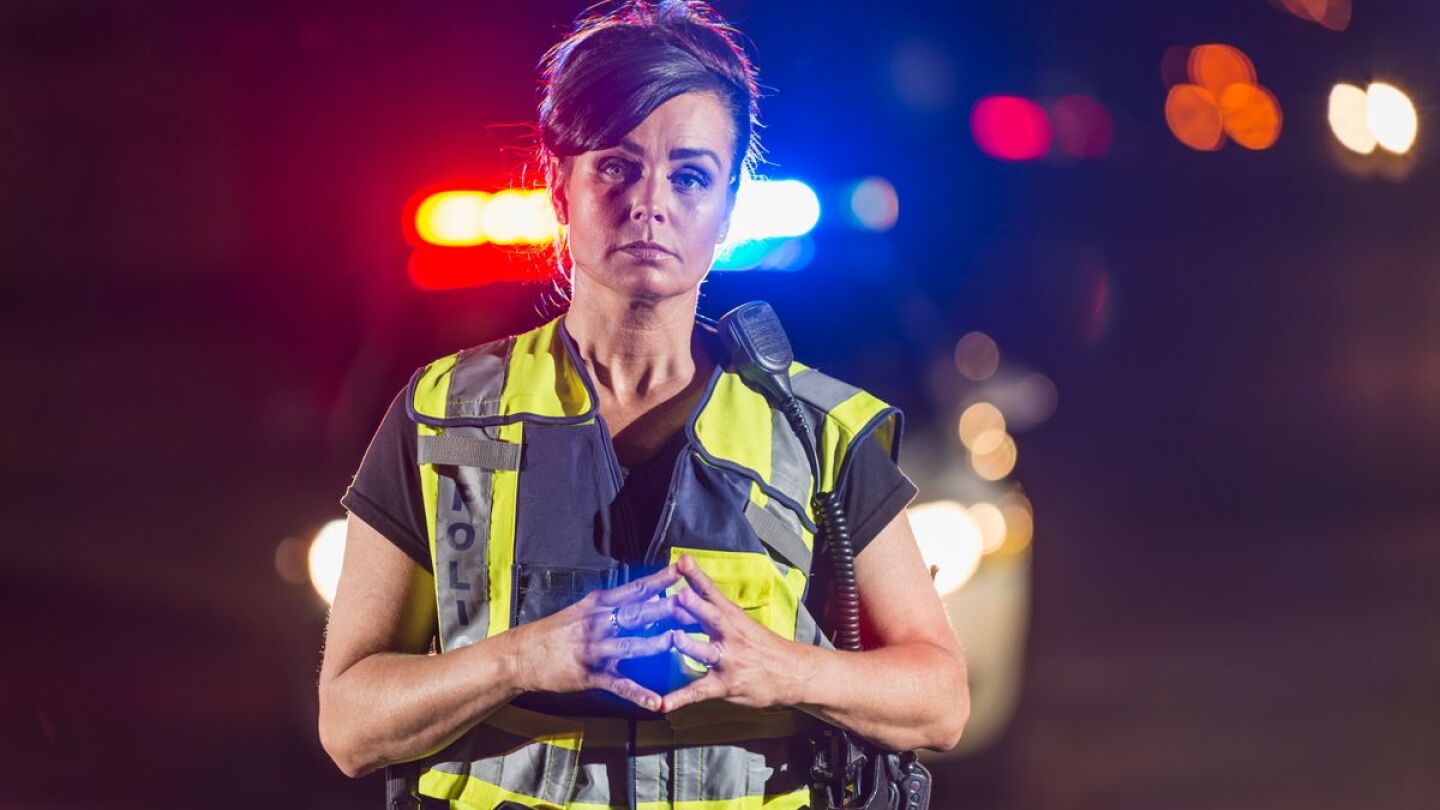Editor’s note: This article is the first in a two-part series examining the results of a Police1 survey on sexual harassment and sexual discrimination in law enforcement, developed by attorney and former police officer Terrence P. Dwyer in collaboration with the Police1 editorial team. The survey gathered responses from more than 500 female officers to assess the prevalence of sexual harassment, gender discrimination and related workplace experiences in law enforcement. Part 2 explores the written accounts shared by participants and the leadership lessons they reveal.
Last year, with the help of Police1, I developed a survey for female police officers. Its purpose was to gauge the extent to which women in policing experience sexual harassment, gender discrimination and/or sexual assault by their male colleagues. The survey also sought to measure the frequency of reporting, the extent of retaliation for reporting and resulting legal outcomes.
Prior academic research I conducted focused on litigation outcomes in media-reported cases involving female police officer sexual harassment, gender discrimination and/or sexual assault from 2000–2024. That database included 283 reported cases. This first article examines the demographic and statistical results from the survey. Part 2 explores the written comments and personal accounts shared by respondents.
| RELATED: What female officers say about harassment and culture in policing
Survey methodology and participation
The Police1 survey was available online from June 10 to August 3. It consisted of 50 questions, with the last two being optional comment prompts. We received 505 responses, and 184 provided optional substantive commentary. In addition to numerical results, participant commentary added valuable context and perspective.
Who and where did we hear from?
The majority of respondents are current sworn officers (80%), with retired officers representing 17% and civilian staff accounting for just under 3%. They serve across a mix of patrol environments — 42% in urban areas, 40% in suburban and 18% in rural regions.
Most respondents work for municipal police departments (63%), followed by sheriff’s offices (13%) and state police agencies (8%). Smaller numbers come from campus police (5%), tribal and transit police (each less than 1%), federal agencies (3%), and other organizations such as county or fire marshal offices (8%).
By rank, police officers make up the largest group (38%), followed by sergeants (20%) and detectives or investigators (16%). Lieutenants comprise about 12%, captains and higher ranks 11%, and other roles about 4%.
Assignments vary as well: 39% work in patrol, 17% in investigative roles and 9% in administrative duties. Supervisory and special assignments each make up around 8%, leadership positions nearly 7%, and another 11% serve in areas such as school resource, training, support or recruitment.
Respondents also represent a wide range of agency sizes. Nearly 30% come from departments with 100–499 personnel, about 16% from agencies with 50–99, another 16% from those with 25–49, 14% from agencies over 1,000, 10% from agencies with 500–1,000, 10% from departments with 10–24, and just under 4% from those with fewer than 10 members.
The survey also asked how many female officers serve in each agency — an important question, as past research suggests that a greater presence of women can improve workplace culture and reduce incidents of harassment and discrimination. While this survey was not designed to confirm or challenge those assumptions, the results provide useful perspective on agency composition. The responses were nearly evenly distributed: 27% reported agencies with fewer than five female officers, 24% with 5–10, another 24% with 11–50, 11% with 50–100, and 15% with more than 100. Notably, more than one in four respondents work in departments with a relatively high number of female personnel.
In this Policing Matters episode, host Jim Dudley confronts a difficult but critical issue in law enforcement: the sexual harassment and discrimination women continue to face. Drawing from a national Police1 survey of more than 500 female officers, Jim speaks with Professor Terry Dwyer — the former New York State Trooper, attorney and Police1 columnist who led the survey — about what the data reveals on repeat offenders, retaliation fears and the impact on culture and leadership.
The episode also features Sheriff’s Detective Carryn Barker of San Mateo County, California, who shares her experience reporting harassment and sexual assault by a supervisor — a case that resulted in one of the state’s largest known settlements. Barker discusses the support she found, the gaps she encountered and the changes she believes are essential for safer, more accountable workplaces in law enforcement.
Respondent profile
These demographics provide an overview of where respondents serve and the environments they work in. But who are these women? The results closely track my prior research on media-reported cases.
The sample is predominantly White (82%), followed by Hispanic or Latino respondents (10%) and Black or African American participants (4%). Smaller groups include Asian or Pacific Islander (2%), Native American (1%), Middle Eastern (less than 1%) and other racial identities (1%).
Most respondents are mid-career professionals, with the largest share between ages 36 and 45 (33%), followed by those 46 to 55 (30%) and 26 to 35 (26%).
Nearly 70% of respondents hold a college degree, led by those with a bachelor’s (40%) and a master’s (28%). About 14% have some college credit but no degree, 10% hold an associate’s degree, 2% report trade or vocational training, and less than 2% hold a professional or doctorate degree. Only 3% report a high school diploma or GED as their highest level of education.
Most respondents (92%) reported no military service, while 7% are prior service members and about 2% currently serve.
Prevalence and persistence of harassment
The above demographics are based on the first 14 survey questions. What followed were specific inquiries into individual respondent experiences with sexual harassment, gender discrimination and/or sexual assault by a male colleague.
None of these results are meant to pigeonhole the issue or apply a broad inference about every agency. What they provide are data for police administrators to consider when gauging agency effectiveness and response to an important workplace issue.
Many female police officer respondents to the Police1 survey experienced sexual harassment in the workplace — 77% compared to 23% who did not. Of those, 95% said it occurred more than once.
This is usually the situation. In the cases I have litigated or consulted on, a complainant has always been subjected to repeated and persistent sexual harassment over an established time by either a sole offender or a group of offenders. The duration and extent of the harassing conduct are what strengthens the case and drags an employer into the mix.
Why is it though that such conduct can persist and not be addressed or rectified by a police agency without a victim having to resort to the legal process? Our Police1 survey results provide some insight.
Frequency of workplace harassment and discrimination
When asked if they witnessed sexual harassment of a female police officer by a male colleague in the workplace, 58% replied that they had. Of those respondents, 92% said they witnessed this on more than one occasion.
However, only 65% who witnessed sexual harassment intervened to stop the harassment. Fewer respondents (23%) who witnessed sexual harassment went the extra step and reported it.
Several reasons were listed for not reporting incidents of sexual harassment:
- Not wanting to create problems at work for themselves (24%)
- Fear of department retaliation (23%)
- Fear of retaliation by the offender (21%)
- Belief that no action would be taken (20%)
- None of their business (4%)
- Other (8%) – including that the incident was already reported, the victim asked not to report, prior reports were ignored, or the harassment appeared mutual.
Types and patterns of harassment
The survey also sought to measure the frequency of certain types of sexual harassment encountered, specifically whether a victim was shown pornography, received inappropriate or sexually explicit text messages or emails, or if the harassment followed a former romantic relationship with a male co-worker. Prior relationships resulting in subsequent harassment accounted for 13.86% of the total responses. This number is in line with results from a prior research study I conducted of media reported cases of sexual harassment, gender discrimination, and/or sexual assault from 2000–2024.
Pornography was a part of the harassing conduct in 23% of the total survey responses, while inappropriate or sexually explicit text messaging/emails occurred in 51% of the responses. Anecdotally, I can add that from interviews I’ve conducted over the past two years, this kind of sexually harassing behavior has become more common. From a litigation standpoint, text messages and emails are excellent evidence when presenting a case on behalf of a plaintiff.
Not surprisingly, the number of complaints submitted in these cases was comparatively small. On average, only 25% of the respondents reported the conduct. Nonetheless, in a professional work environment this behavior is unacceptable, and the less frequent reporting does not mean it is less of a problem. However, former relationship scenarios wherein a jilted officer turns into a harasser or a stalker seem to be less common, though they do occur. In one case I handled the former paramour, a supervisor, became obsessive, harassed my client, and then stalked her. His behavior became more erratic and troubling. He was terminated and the agency had to pay damages to my client. These situations in the workplace, though rarer, have the potential to be volatile and lead to unfortunate outcomes.
Gender discrimination and supervisory response
Gender discrimination, simply defined as unequal treatment based on gender or gender identity under more recent court and statutory iterations, was viewed by survey respondents as an ongoing problem in policing. Over 90% agreed that it was a problem between them and their male colleagues and over 89% said it was a problem between them and their male supervisors. Keeping in line with this response, only 19% said male supervisors were likely to be responsive to their complaints while 55% said female supervisors would be more responsive.
Sexual assault by male colleagues was viewed as a problem by 36% of respondents and 30% said it was a problem with male supervisors. These numbers are higher than what I found in my study of media reported cases of lawsuits alleging sexual assault by a male colleague, which was 19% of the 283 cases reviewed. Of course, this number reflected a percentage from the cases that were filed. Many cases go unreported, which leads me to the next survey result.
Civil complaint outcomes
A female officer who experienced sexual harassment, gender discrimination, and/or sexual assault did not report for the same three reasons respondents gave for not reporting if they witnessed another female being victimized: fear of creating problems for themselves at work, fear of retaliation by the offender, and fear of retaliation from the department. A fourth reason, a belief that no action would be taken on the complaint, was statistically even with the fear of department retaliation. Just over 25% of those who did not report incidents said they felt they could take care of the problem on their own. Among the female officers who reported incidents occurring to other female officers, 32% experienced retaliation, and for those who reported as victims the percentage was higher at 44%.
For those who filed a complaint with their employer, 7% felt that it was promptly investigated. The complaint was substantiated by the employer in 38% of the cases reported. When respondents litigated in court, they prevailed 47% of the time. However, only 14% of the respondents filed civil claims.
When civil claims are filed, slightly more than half result in six-figure settlements or verdicts.
What the findings suggest
The second part of this series moves beyond the numbers to explore the personal accounts shared by survey participants. Their firsthand experiences reveal how agency culture, leadership behavior, and investigative practices shape the reality of workplace harassment and discrimination in policing.
Thank you to those who participated in the survey and shared your experiences. Part 2 examines those personal accounts and what they reveal about leadership, accountability and change within policing.
Police1 will continue to provide analysis of the survey findings. Bookmark our Women in Law Enforcement content hub to stay informed.
More on harassment and discrimination in policing
- Workplace harassment continues to plague female police officers
- Sexual harassment and gender discrimination in law enforcement: Part 1
- Sexual harassment and gender discrimination in law enforcement: Part 2





















